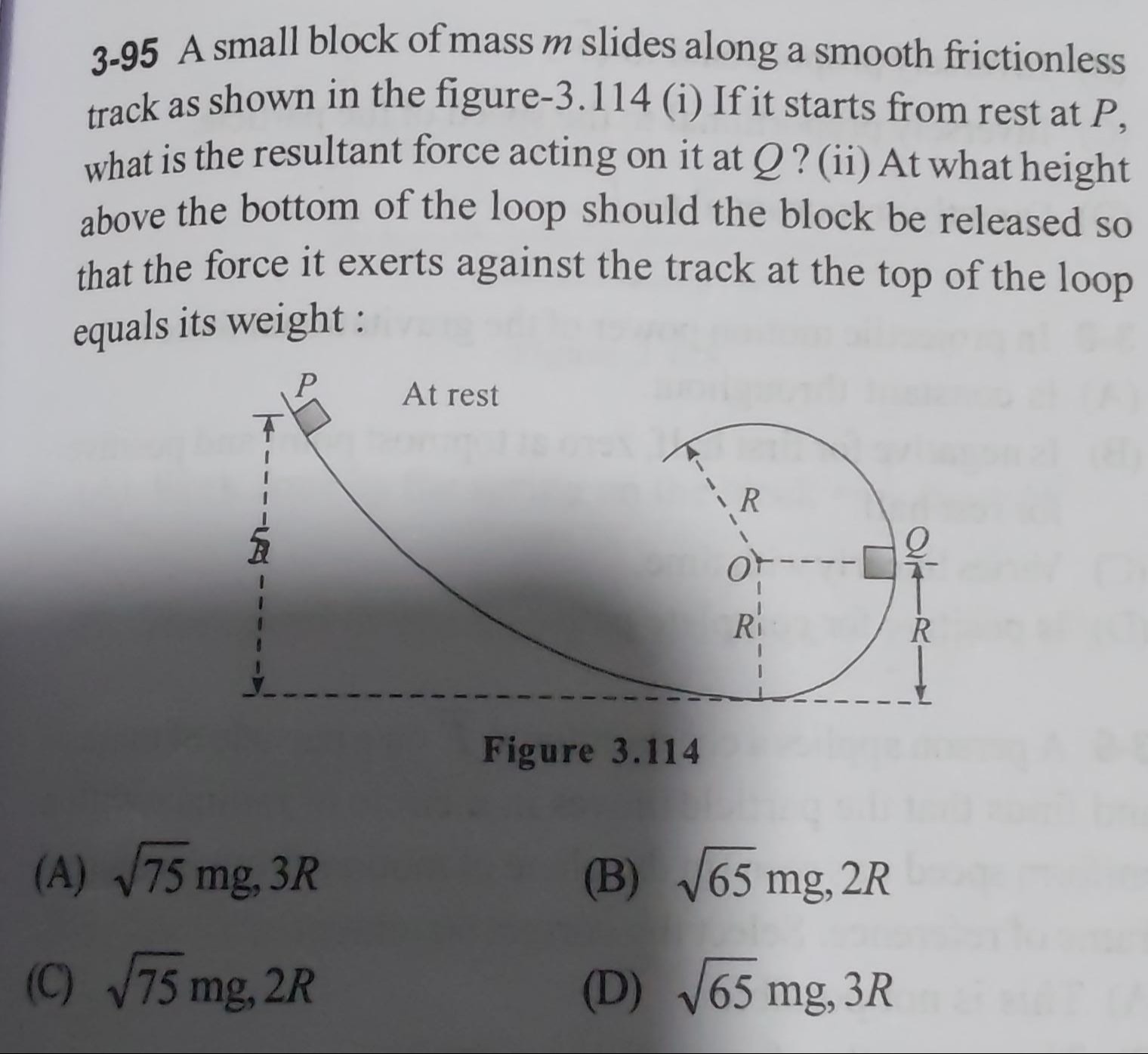Question
Question: A small block of mass *m* slides along a smooth frictionless track as shown in the figure-3.114 (i) ...
A small block of mass m slides along a smooth frictionless track as shown in the figure-3.114 (i) If it starts from rest at P, what is the resultant force acting on it at Q? (ii) At what height above the bottom of the loop should the block be released so that the force it exerts against the track at the top of the loop equals its weight :

75 mg, 3R
65 mg, 2R
75 mg, 2R
65 mg, 3R
65 mg, 3R
Solution
Part (i): Resultant force at Q
The height of point P is hP=3R. The block starts from rest at P, so vP=0. The height of point Q is hQ=R. Using conservation of energy between P and Q: mghP+21mvP2=mghQ+21mvQ2 mg(3R)+0=mgR+21mvQ2 2mgR=21mvQ2 vQ2=4gR
At point Q, the forces acting on the block are its weight (mg) acting downwards and the normal force (N) from the track, which is horizontal. The resultant force is the vector sum of these two forces. Resultant force magnitude =N2+(mg)2. Assuming the resultant force is 65mg, then (65mg)2=N2+(mg)2 65(mg)2=N2+(mg)2 N2=64(mg)2 N=8mg.
Part (ii): Release height for force at the top of the loop
Let the release height be h. At the top of the loop (height 2R), let the velocity be vtop. Using conservation of energy: mgh=21mvtop2+mg(2R) vtop2=2gh−4gR
At the top of the loop, the forces are weight (mg) and normal force (N), both downwards. The net force provides centripetal acceleration: mg+N=Rmvtop2 Given N=mg, mg+mg=Rmvtop2 2mg=Rmvtop2 vtop2=2gR
Equating the expressions for vtop2: 2gh−4gR=2gR 2gh=6gR h=3R.
The resultant force at Q is 65mg and the release height is 3R.
